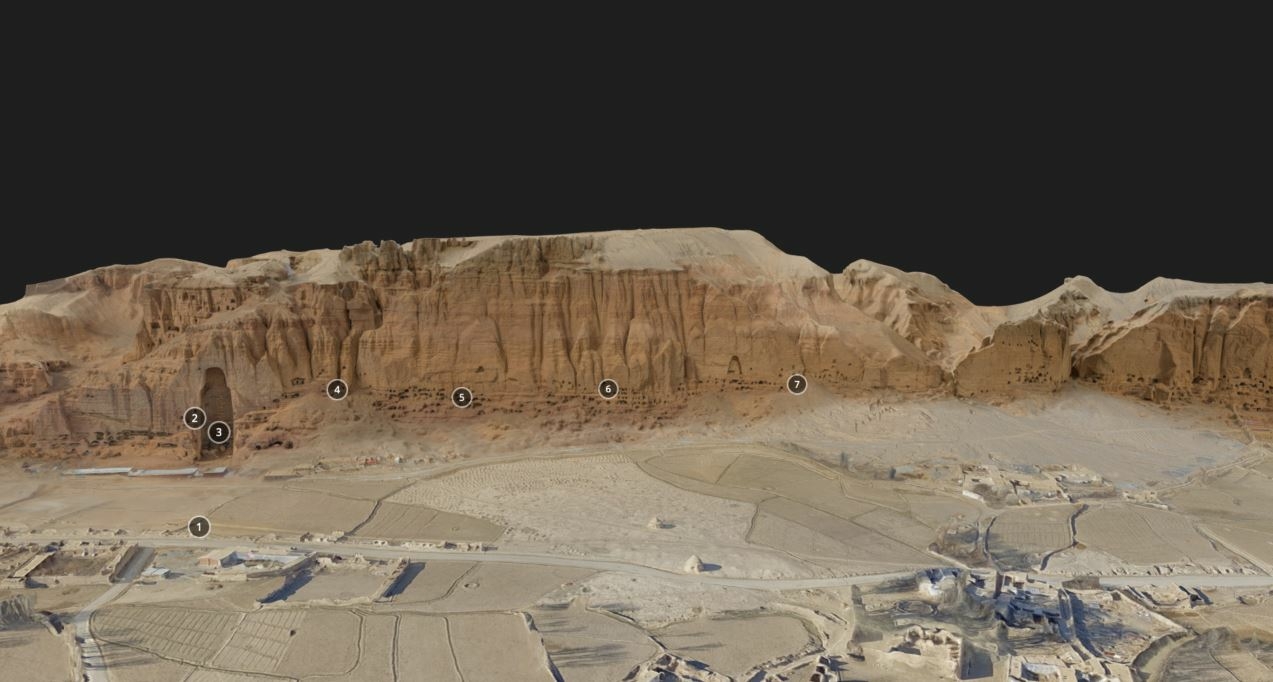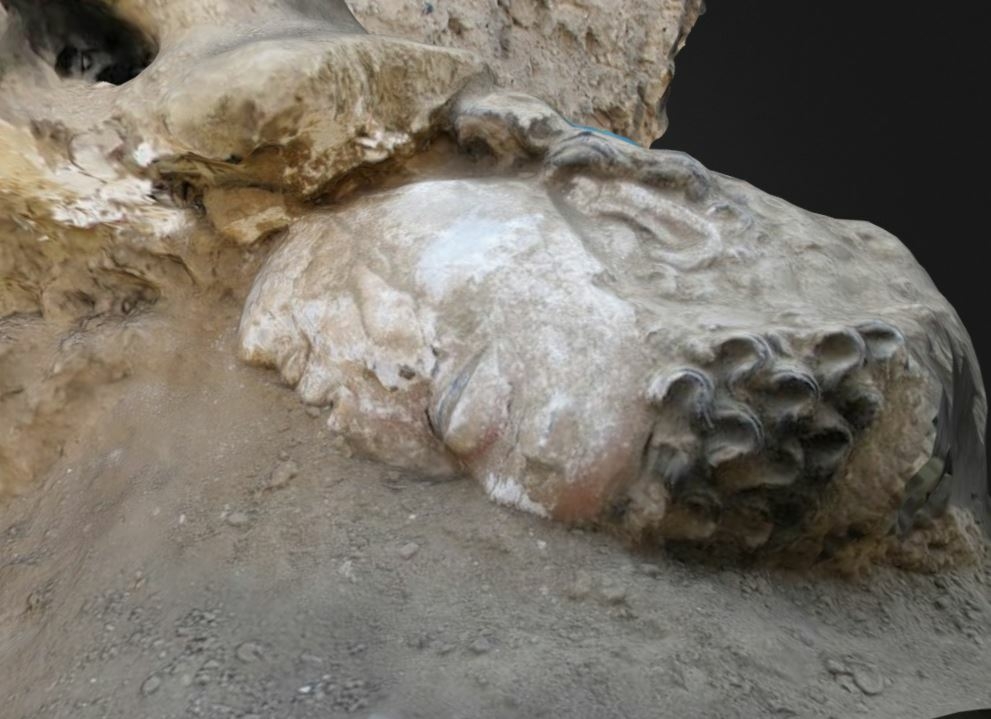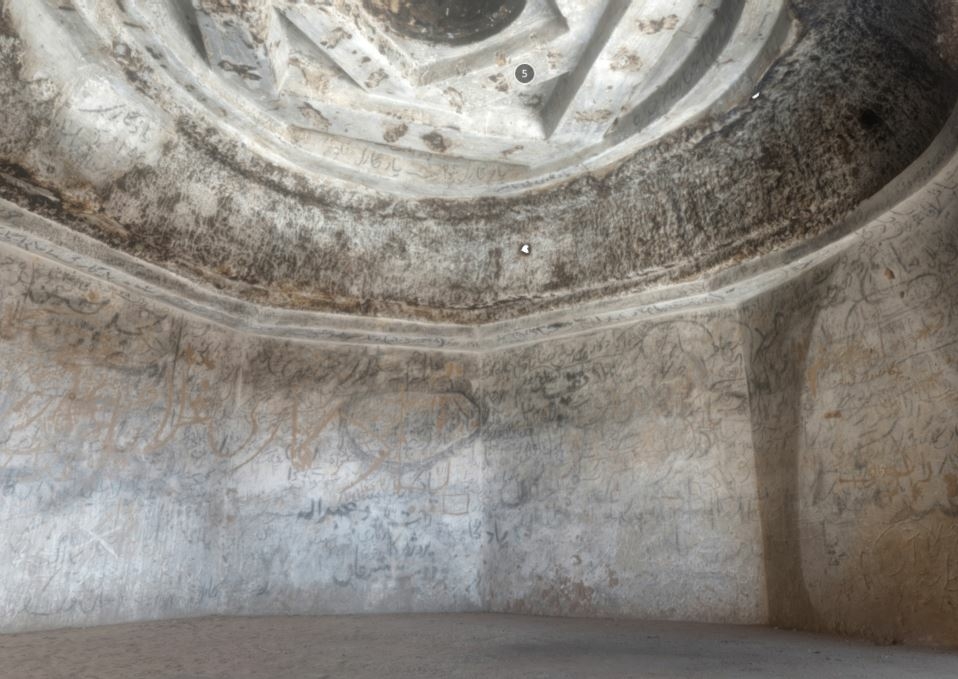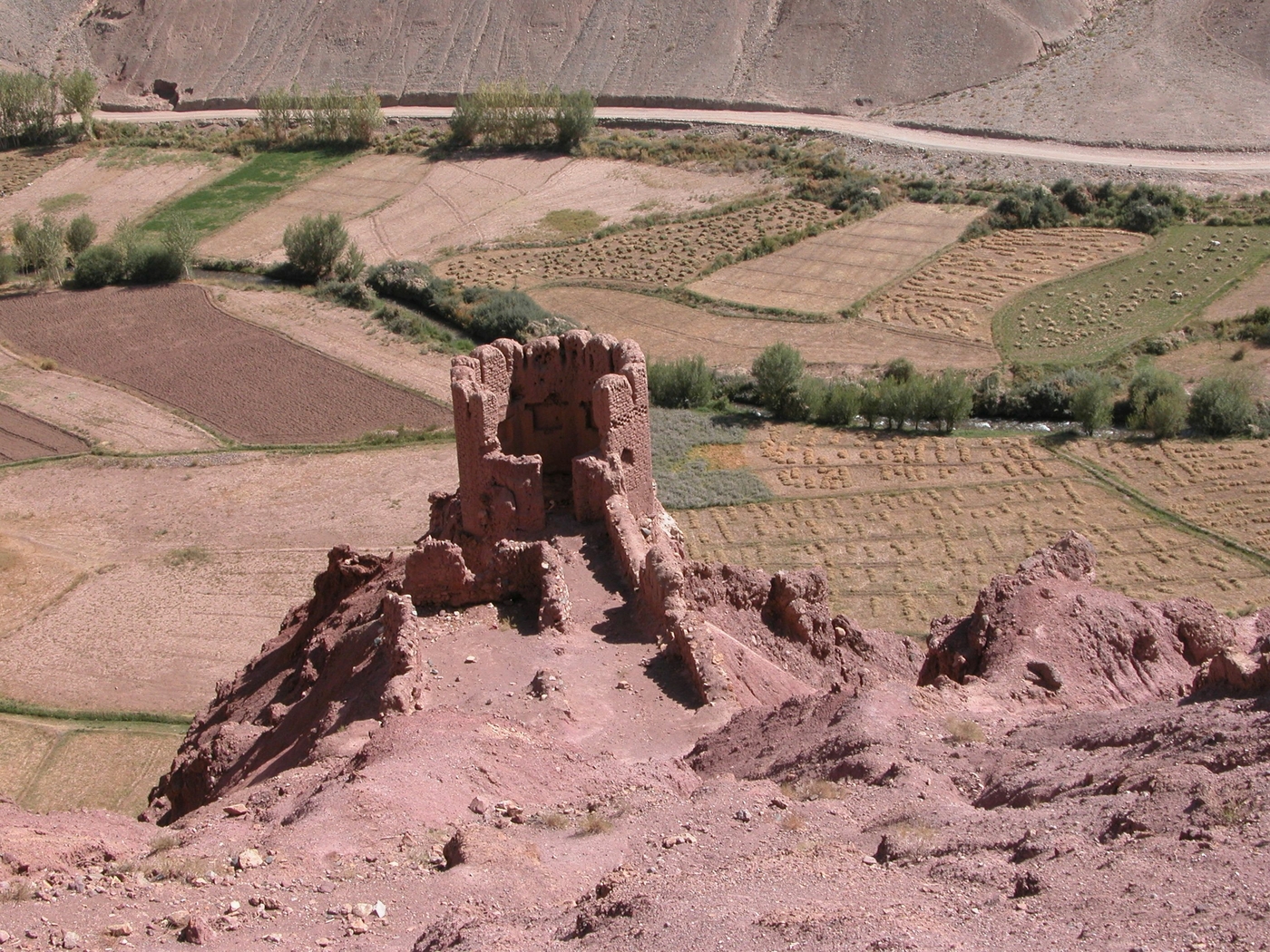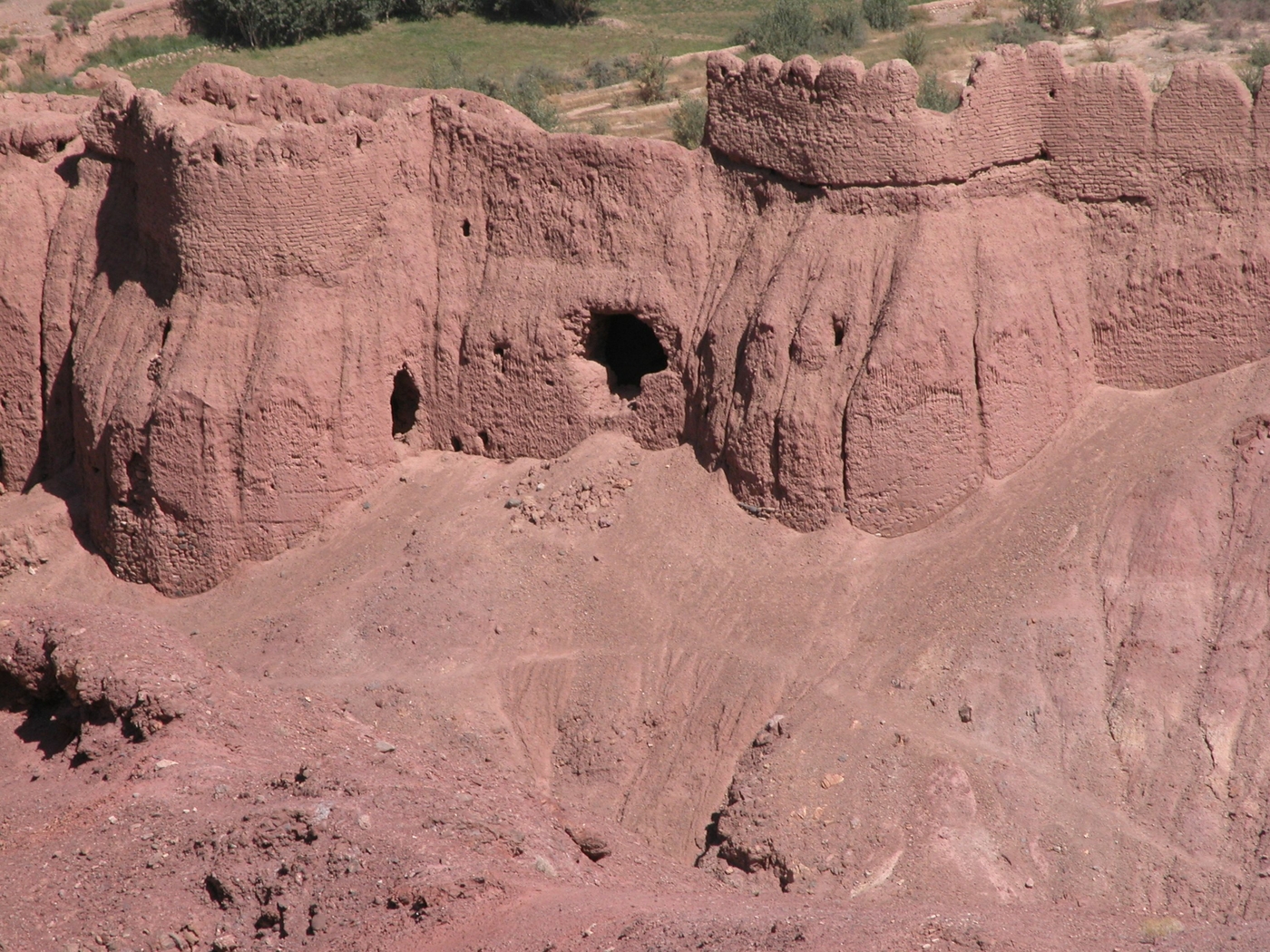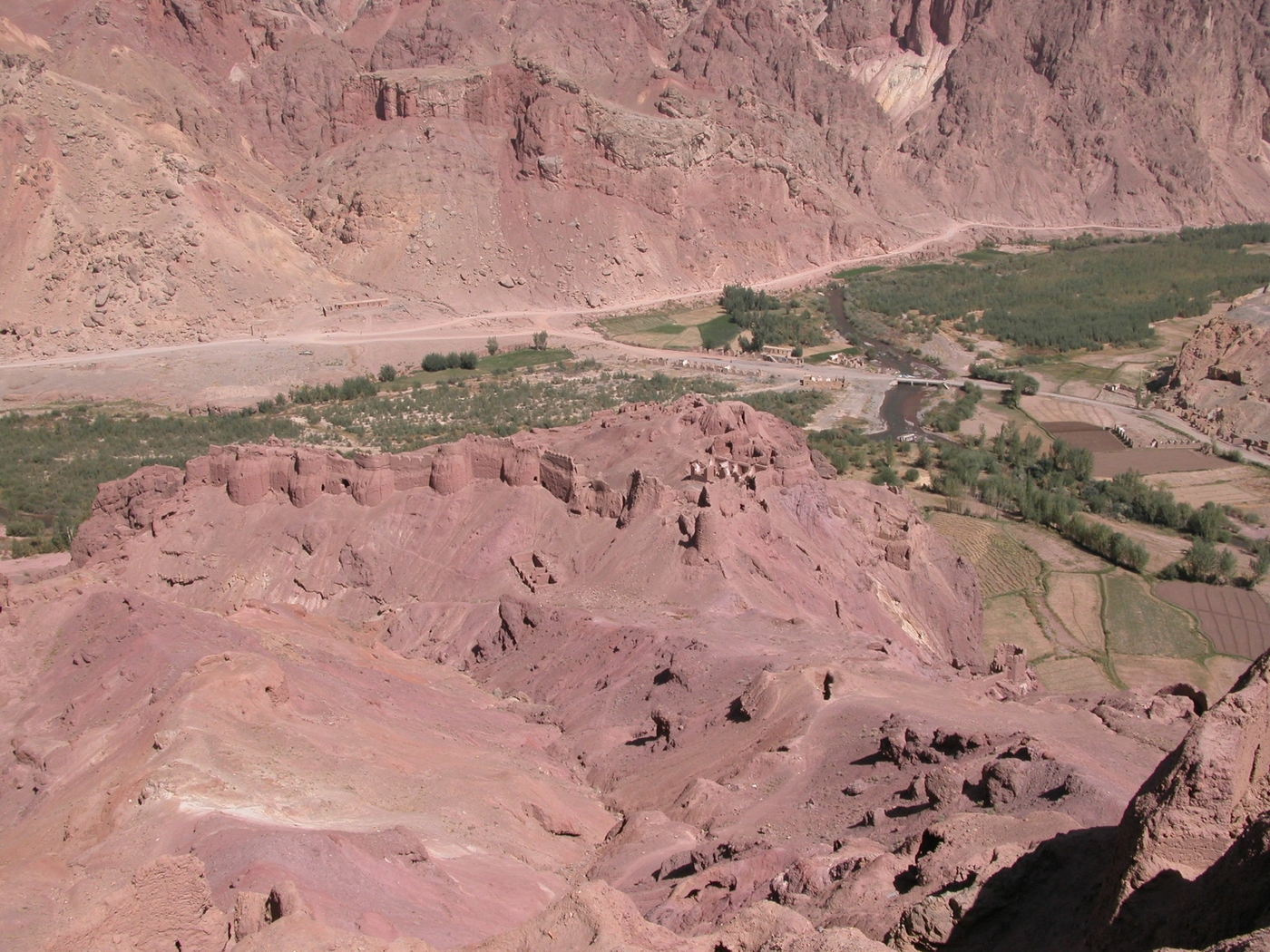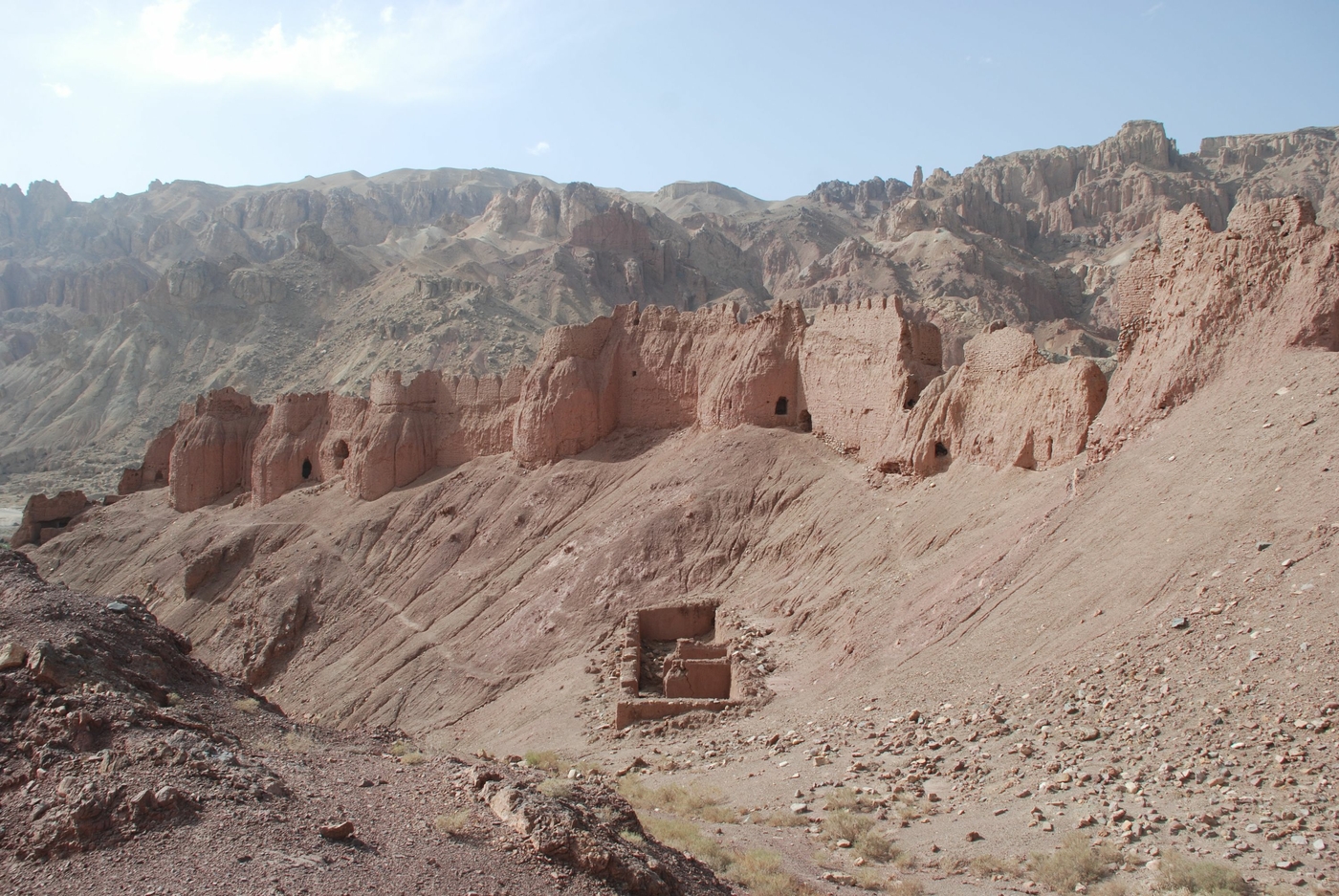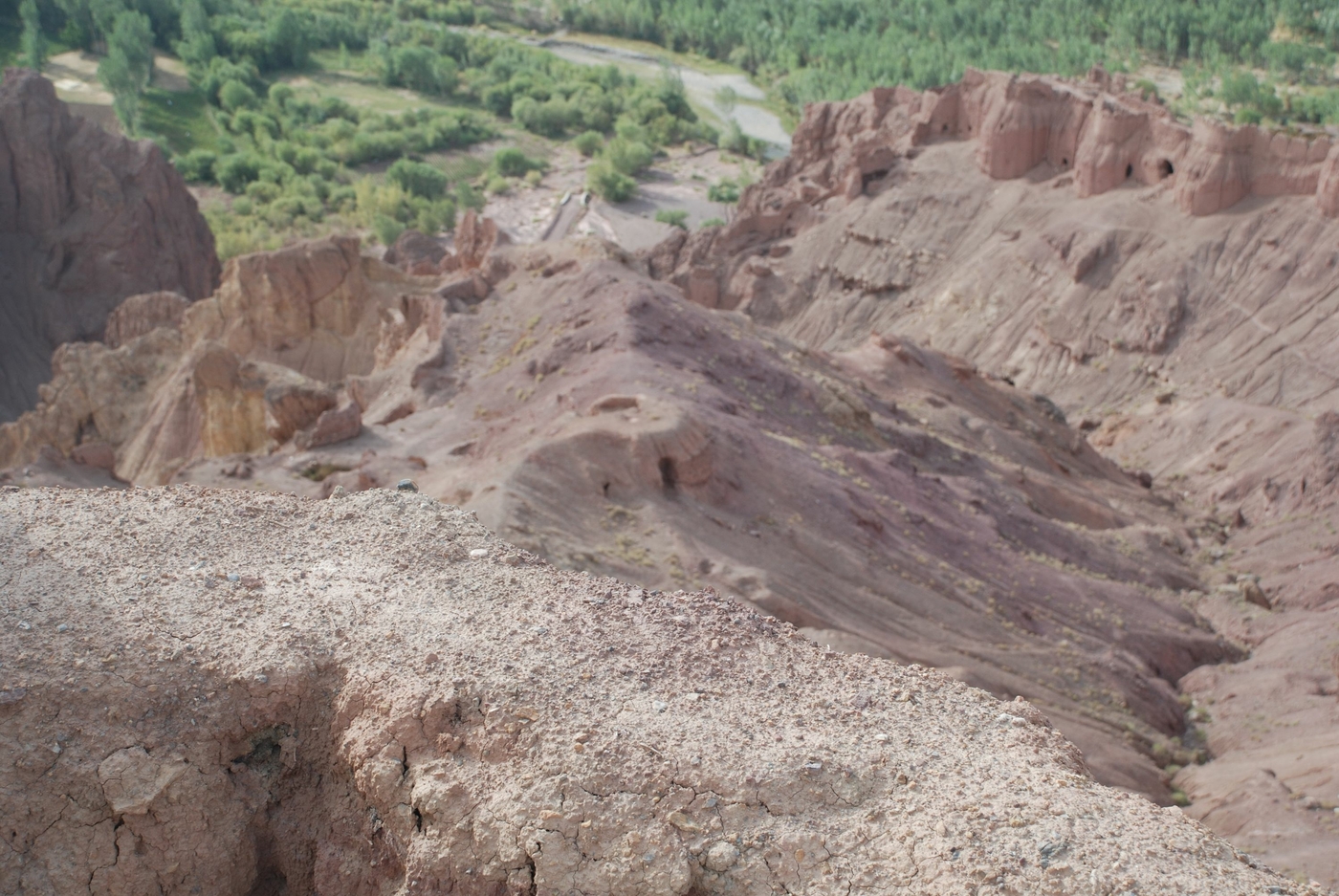Bamiyan
At the centre of Afghanistan, deep within the Hindu Kush, the Valley of Bamiyan contains one of the country’s largest group of Buddhist monuments. Until March 2001, visitors could admire monumental representations of the Buddha unparalleled anywhere in the region.
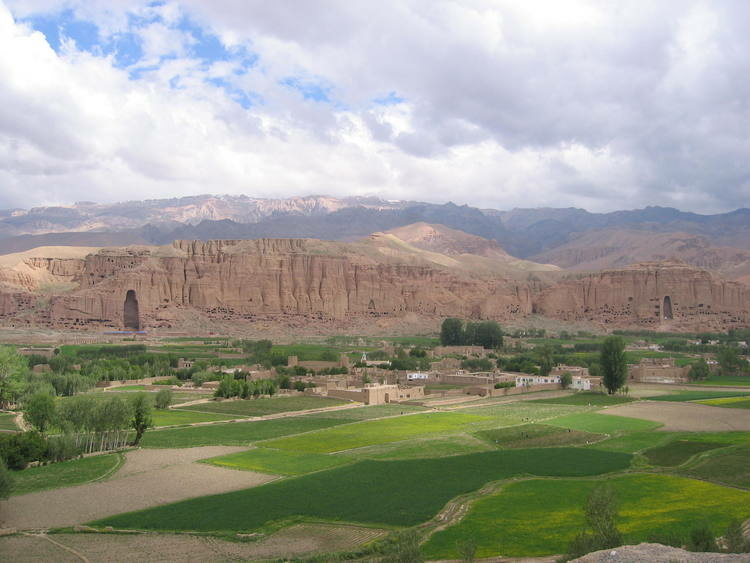
A remarkable site
The site was described by the Chinese traveller Xuan Zang in the 7th BCE. He already mentions a 100-metre-long reclining Buddha. It was only in the 19th century that Western travellers begin to mention Bamiyan and published the first representations of the site.
2,500 metres above sea level, Bamiyan Valley is edged with cliffs sculpted by erosion in a conglomerate of sand, clay and gravel. The only plant coverage is close to waterways and in irrigated areas.
Studying and preserving: the first scientific expeditions to Bamiyan
The first archaeological investigation of this site began in the late 1920s. A team from DAFA, headed by André Godard and Joseph Hackin, began by surveying, mapping and recording the area, providing a foundation of scientific data on which to base a study of the site. Some mural paintings decorating the monasteries or the niches of the giant Buddhas were removed for conservation and presentation at the Museum of Kabul and the Musée Guimet.
After the disaster: salvaging what remained
The destruction of the Buddhas followed by the international intervention in Afghanistan led to a major international effort that resulted, from 2003, in the inclusion of Bamiyan on the List of World Heritage in Danger and the organisation, under the auspices of UNESCO, of safeguarding and research campaigns to establish what might be salvaged from the remnants of the Buddhas and other sites in the valley. The campaigns established the impossibility of restoring the two great Buddhas because only 10 % of the original statue had survived in the case of the largest statue and 30 % of the smallest. There are plans to reconstruct the statues, although this is likely to prove technically and scientifically complicated.
A vast heritage site with an uncertain future
The excavation of the Buddha niches nevertheless established a precise date for their construction based on Carbon 14 analyses and epigraphic data. We know that the largest statue (55 metres) is datable to between 580 and 636 CE and the smallest (38 metres) to between 540 and 591 CE.
Other sites in Bamiyan Valley like Shahr-e Gholghola (City of Screams), traditionally thought to have been destroyed by Genghis Khan, and Shahr-e Zohak (the Red City), which controlled access to Bamiyan Valley, were also occupied during the Buddhist period (at least from the 1st century CE). They have been damaged by looting and mining and mine clearance operations.
The site has been the focus of conservation work and efforts to preserve and promote it. Threatened by vandalism, it has also been affected by climate change, which accelerates the process of erosion.


